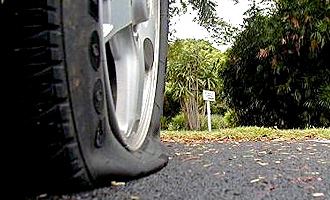| Car Breakdowns | << Back to Education |
Common Causes of Breakdown
The key to avoiding a breakdown is good and regular maintenance together with an understanding of what's most likely to go wrong.
Many of these faults can be fixed at the roadside, but most can be avoided with the correct preventative care.
Below is the top 10 causes of breakdown.

1) - Flat of Faulty Battery
| Most common problems are caused by terminals and clamp connections or by a loss of voltage, often caused by constant use on short journeys without regular recharging. | |
| At every service, check that terminals have been cleaned and protected from corrosion with a layer of petroleum jelly or grease. Clamps and connections must be secure. | |
| If you seldom make a long journey, a fortnightly overnight charge prolongs battery life. | |
| Modern maintenance-free batteries need no top-up. |
2) - Lost Keys
3) - Flat / Damaged Tyres and Wheels
4) - Alternator Faults
5) - Starter Motor
6) - Distributor Cap
7) - Fuel Problems
8) - Clutch Cables
9) - Spark Plugs
10) - HT Leads
© ![]() has compiled this information to be used for educational purposes only
has compiled this information to be used for educational purposes only








